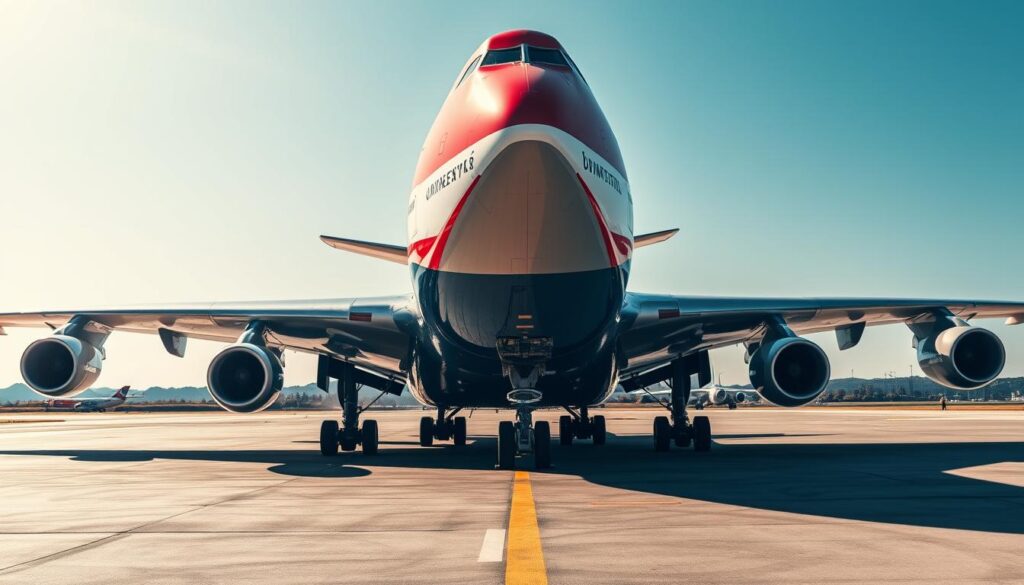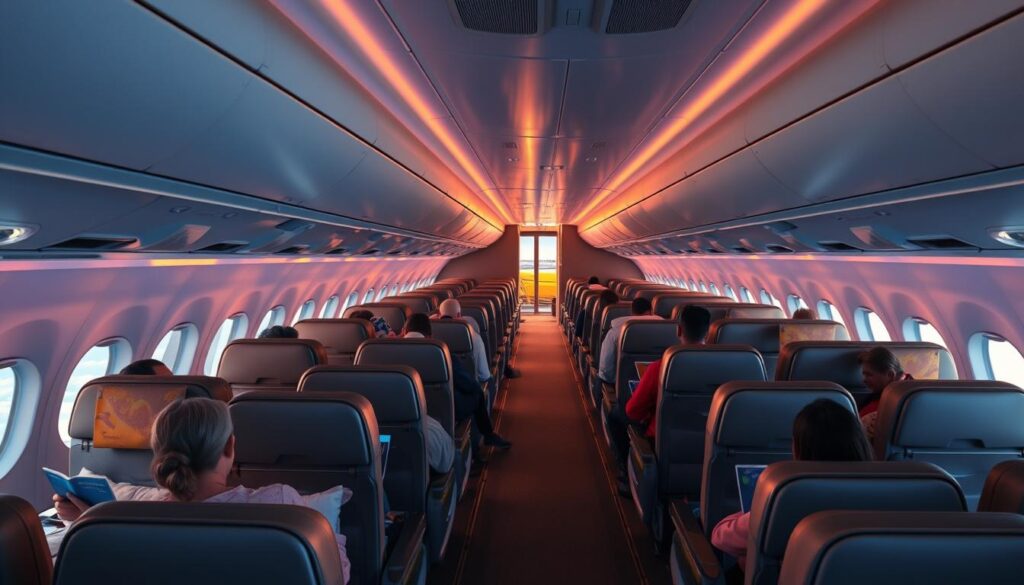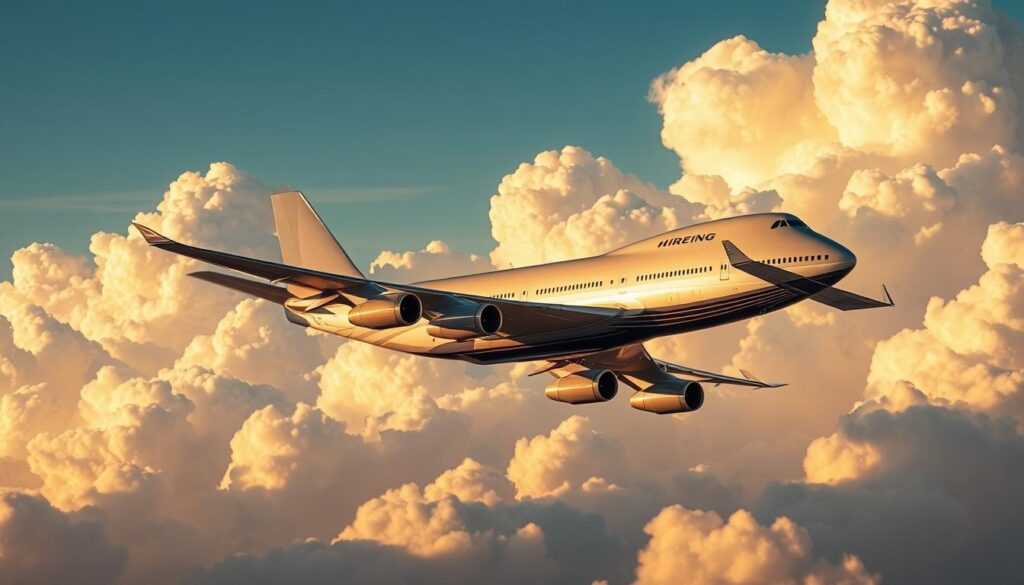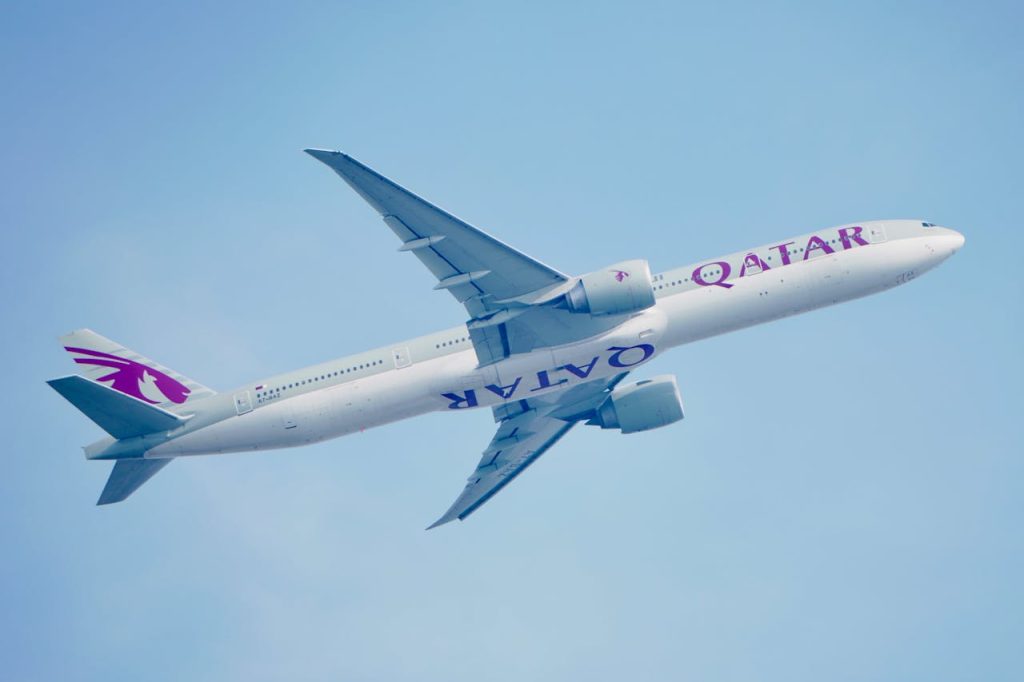Did you know the Boeing 747, known as the jumbo jet, has changed air travel? It has taken over 5 billion passengers around since it started. That’s a huge number, showing how big its role is in aviation history.
The 747SR was the first big jet airliner. It brought new ideas in how many people could fly and how far. These changes made long trips easier and allowed more people to travel together.
Looking into the history of the Boeing 747SR reveals its advanced technology and design. This jet is proof of Boeing’s focus on being the best and bringing new ideas to flying. It’s a key piece of our aviation story.
Key Takeaways
- The Boeing 747SR transformed aviation with its wide-body design.
- It has transported over 5 billion passengers since its introduction.
- The aircraft represents a significant milestone in Boeing aircraft history.
- Its design set new standards for long-haul flights.
- Technological innovations in the 747SR continue to influence modern jets.
Introduction to the Boeing 747
The Boeing 747 is famously called the jumbo jet. It made air travel more affordable by fitting more passengers and reducing costs. This magnificent plane responded to the rising need for flights and the desire to carry many travelers over long distances. The journey of the 747 started with its first model, the 747-100. It was introduced on January 22, 1970, in partnership with Pan American World Airways. This event was a big moment in the history of flying.
The Birth of the Jumbo Jet
The creation of the Boeing 747 showed that flying could be for everyone. It had an upper deck, making it the symbol of modern flying and changing how airlines worked. This jet started a new period where more folks could fly together. It changed tourism and global connections.
Early Performance and Specifications
The first specs of the plane showed what an engineering wonder the Boeing 747 was. It was 231 feet long and could seat over 400 passengers. This made it a major influencer in the world of flying. The 747-100 ran on Pratt & Whitney JT9D turbofan engines. These engines were powerful yet efficient. Thanks to these, the giant plane could fly long distances without trouble.
| Specification | Details |
|---|---|
| Length | 231 feet (70.6 meters) |
| Passenger Capacity | Over 400 passengers |
| Engine Type | Pratt & Whitney JT9D turbofan |
| Wingspan | 195.8 feet (59.6 meters) |
| Maximum Takeoff Weight | 735,000 lbs (333,000 kg) |
Design Features of the Boeing 747SR
The BOEING 747SR is a major step forward in the design of huge jets. It has special features that improve how it works and performs. Its cockpit and upper deck are uniquely designed. They offer flexible ways to carry passengers and cargo.
Distinctive Cockpit and Upper Deck
The Boeing’s raised cockpit gives pilots better visibility and control. This design helps with the needs of the flight crew and lets the plane carry more cargo. The extra space on the upper deck can be used for more seats or cargo storage. This makes the 747SR versatile for airlines.
Advanced Engine Technology
The BOEING 747SR comes with high-tech Pratt & Whitney JT9D engines. These engines are powerful and save a lot of fuel, which is great for long flights. It allows airlines to save money on long trips but still have a powerful plane. The wings are shaped to make the plane fly smoothly and quickly, making it a standout in aviation.
| Feature | Description |
|---|---|
| Cockpit Design | Raised for enhanced visibility and operational efficiency |
| Upper Deck | Flexible space for passenger or cargo use |
| Engine Type | Pratt & Whitney JT9D |
| Engine Performance | High thrust with improved fuel efficiency |
| Wing Design | 37.5° sweep for optimal speed and stability |
BOEING 747SR: The Legendary Jumbo Jet
The BOEING 747SR version has won much notice in aviation history. Since its launch in 1973, it was made for short flights. It quickly became key for airlines with busy routes because it could hold more passengers. This was especially true in Japan, where it helped meet the growing demand for local travel.
Overview of the 747SR Variant
The 747SR is a special type of the famous jumbo jet. It was built to carry more people on shorter trips. Thanks to this, airlines could serve more passengers wanting to fly within the country. This added to their fleet efficiently. The coming of the 747SR was a big deal. It showed how being flexible could make flying better and help airlines run more smoothly.
Historical Significance in Aviation
When we look at the 747SR’s historical impact, we see its big role in changing air travel. It made busy domestic flights easier to handle. Plus, it showed how big jets could serve lots of passengers effectively. The 747SR’s story keeps affecting new advances in flying. It remains a powerful example of how airline fleets have grown and become more efficient in moving people.
Aviation History of the Boeing 747
The Boeing 747 has been a game-changer in aviation history. It turned long-distance flying into something accessible for many. It started with its first flight on February 9, 1969. This event was a big deal for Boeing and the whole aviation industry.
First Flight and Entry into Service
The Boeing 747 flew for the first time and then began flying for airlines in January 1970. Pan American World Airways, or Pan Am, was the first to use this huge jet. With the 747, Pan Am reshaped air travel and secured the jet’s legendary status.
Influential Airlines in 747’s Journey
Over time, big airlines like KLM and Lufthansa made the 747 popular on international flights. They didn’t just grow their fleets; they cemented the 747’s role in long-distance travel. This jet connected the world like never before.
Flight Performance and Capabilities
The BOEING 747SR stands out in aviation for its top-notch flight abilities. It’s designed to hold many passengers and move them efficiently. Flying at around Mach 0.85 speed, it excels in long-distance trips, making it top pick for long hauls.
Cruising Speed and Range
This jumbo jet can fly over 6,000 nautical miles without stopping for gas. It connects big cities across the globe in one go. Its engines work well and the design helps it move smoothly, letting airlines take good care of their passengers.
Passenger Capacity and Layout
Depending on the arrangement, the BOEING 747SR can hold 400 to 500 people. Airlines can set it up to suit different kinds of travelers, from those on vacation to business folks. It promises a comfy trip with its roomy seats and modern features.
Impact on Airline Fleets
The BOEING 747SR changed airline fleets forever, marking a key moment in aviation history. Airlines began to focus more on long-haul flights, and the 747SR was at the heart of this shift. It met the need for more seats and better efficiency.
How Airlines Integrated the 747SR
Airlines loved the BOEING 747SR for its special features. Its design made it perfect for carrying lots of passengers on busy routes. Many big airlines added the 747SR to their fleets, making it key for long trips. This helped them keep up with more people flying to faraway places.
Long-Haul Flight Efficiency
The 747SR made long-distance flights much better. Thanks to its range and fuel use, it helped airlines offer good prices on international flights. With it, flying long distances became cheaper and more efficient. More passengers could travel together, cutting down the cost per flight. The 747SR proved vital for global travel needs.

Technological Innovations
The BOEING 747SR changed modern aviation in big ways. It stands out in the history of flight. Its improvements made flying much better.
Flight Instruments and Navigation Systems
The BOEING 747SR was different because of its flight tools. These tools helped pilots fly with more accuracy. Now, they could take off, cruise, and land better.
Its systems showed pilots data in real-time. This helped them make better decisions when flying. GPS and autopilot changed how pilots flew long distances.
Safety Improvements Over Time
Safety features in the BOEING 747SR boosted passenger trust. Over time, new safety tech became common. This made the airplane safer to fly.
It had backup systems and warnings for dangers. These features met top safety standards. The 747SR became known as a safe choice for world travel.
Passenger Experience on the Jumbo Jet
The BOEING 747SR offers a top-notch passenger experience in the sky. Its spacious cabin and smart design make every journey comfortable. Right from the start, the vibe onboard welcomes everyone. It sets the mood for a relaxed trip, no matter the distance.
Comfort Features and Cabin Design
The BOEING 747SR stands out with its cabin layout aimed at boosting comfort. Its wider aisles help passengers move around easily. There’s more legroom and seats that recline further. Each airline fits its planes to meet what travelers want, adding things like personal entertainment and adjustable lights.
First-Class Amenities
First-class on the BOEING 747SR is next-level luxury. It offers things like private lounges and seats that lie flat. The food is like eating at a fancy restaurant in the sky. We’ve seen firsthand how these features better the flight experience. To dive deeper into personal stories, check out this article about flying the 747.

The BOEING 747SR is a top pick for global travelers because of its outstanding comfort features and first-class perks. Its design considers all kinds of passenger needs, making flights on this legendary jet something special.
Operational Variants of the Boeing 747
The Boeing 747 is known for its amazing flexibility. It meets different needs in the aviation world. Each version is designed for a specific job, showing unique features and abilities. The Boeing 747SR is a special variant. In addition, there are both cargo and passenger models.
Comparison with Other Boeing Aircraft Variants
It’s important to compare the Boeing 747 versions with other Boeing planes. The 747-400 and the 747-8 show off tech upgrades. These improvements help with better flights and eco-friendly benefits. They help airlines keep up with growing needs for moving people and goods.
| Boeing Variant | Type | Cruising Speed (Knots) | Range (nautical miles) | Passenger Capacity |
|---|---|---|---|---|
| BOEING 747SR | Passenger | Mach 0.85 | 6,500 | 500 |
| 747-400 | Passenger | Mach 0.85 | 8,000 | 416 |
| 747-8 Freighter | Freighter | Mach 0.85 | 8,000 | N/A |
Freighter vs. Passenger Versions
Understanding the differences between freight and passenger 747s is key. Freight versions like the 747-8 Freighter are made to carry cargo. They have special features for handling goods. Passenger variants, like the 747SR, are all about comfort. They offer a fancy travel experience.
Challenges Faced by the Boeing 747 Program
The Boeing 747 has faced many challenges over the years. One big challenge was the rise of the Airbus A380. This new plane could carry more passengers, making things tough for the Boeing 747SR and its operators.
Market Competition with Airbus A380
When the Airbus A380 came into use, it changed the airline industry. Its size made the Boeing 747SR look at its place in the market again. Airlines had to think hard about their planes, considering costs and what passengers want. This made Boeing work harder to stay important as things kept changing.
Production Challenges and Costs
Producing the Boeing 747 has had its problems, too. Changing from one model to another brought higher costs and delays. This meant Boeing had to manage things carefully to stay in the race. Money issues made it crucial to run things well and plan smart to keep up in the tough aviation market.
Conclusion
The BOEING 747SR is a legend in aviation history. Its unique design and cool tech changed long-haul flights for good. It made flying better with big cabins and top-notch navigation.
This plane didn’t just fly; it inspired future planes and changed airlines worldwide. Even with new tech coming out, the 747SR’s achievements are a gold standard. It’s a symbol of what good design and innovation can do.
The BOEING 747SR shows the power of creative thinking in flying. It connected the world and made flying possible for more people. This legendary jet’s story will inspire us for many more years.


